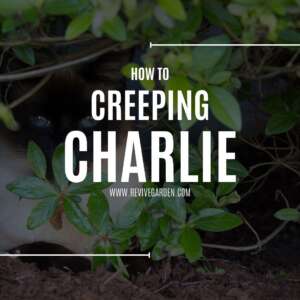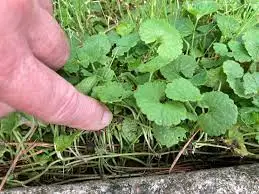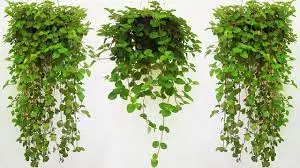Table of Contents
 Many people who value excellent lawn harbour secret hopes that they may eradicate creeping Charlie. Weeds like dandelions are more painful to get rid of than the creeping Charlie plant.
Many people who value excellent lawn harbour secret hopes that they may eradicate creeping Charlie. Weeds like dandelions are more painful to get rid of than the creeping Charlie plant.
You can win the battle against creeping Charlie if you are familiar with a few simple strategies for eliminating this pesky weed.
This article will help you to find the solution and prevention of Creeping Charlie’s growth. I hope you will find it helpful.
What Is Creeping Charlie?
Creeping Charlie (Glechoma hederacea) is commonly referred to as ground ivy. The green leaves of creeping Charlie weed have distinctive scalloped edges. The flower of the creeping Charlie is a slight shade of purple.
As it spreads, you can tell you’re dealing with the creeping Charlie plant. It’s a vine that spreads rapidly by sending out underground runners, so it may cover a large area quickly if given a chance. Each leaf bud on a vine is a node; when these nodes contact soil, they take root—because of this, pulling up creeping Charlie weed can be very frustrating. Any rooted node that is abandoned has the potential to sprout into a new plant.
What To Do Before You Start Killing It?
While preventing new infestations of Creeping Charlie is preferable, there are various options for eradicating the plant after it has taken hold. Because some methods are more efficient and others take more time or effort to implement, perseverance is key to success. Managing invasive plants is similar to controlling insect pests:
First, employ the strategy that will have the most negligible impact on the ecosystem, including plant and animal life, and then gradually increase the pressure until you have achieved your goal.
Pick a day with no or little breeze if you plan on using any of the below techniques; this will help avoid any sprays from drifting or the seeds on the plants you pick from blowing away.
To avoid getting an unpleasant rash from picking these weeds, it’s best to utilize protective gear like gloves and long sleeves. If you end up employing chemical applications, you must protect your hands, arms, legs, and eyes.
Replace the weeping Charlie ground cover with native alternatives or grasses that can grow in the shadow once you’ve gotten rid of it.
The Easiest Way to Get Rid of That Charlie
By Hands

Although hand-pulling creeping Charlie is possible, Drew Wagner of Sod Solutions says it is rarely successful since the vines’ rooted nodes are so widely dispersed. Eventually, “the nodes can form a new plant.”
Here are some methods you can do to attempt to get rid of the weed without using any harmful chemicals:
- Using gardening shears, trim the leaves and vining stems, but leave enough of the plant so that the roots may be pulled out by hand.
- To prevent the spread of plant fragments that can regenerate, place the trimmings in a paper or plastic bag before disposal.
- When you’re done clearing a space, make sure to wet it down with water thoroughly. The soil should be worked with a spade or trowel to dislodge the remaining roots and rhizomes after at least 30 minutes have passed.
- Loosen the soil around especially large or deep root systems with a shovel or pitchfork, and then pull out the roots by hand. Please place them in a bag to dispose of the plant and its origins without soil contamination
- Do a thorough search of the area and pull out any lingering rhizomes or roots. To get rid of the complete root system, you may need to go over the region more than once.
- Unfortunately, this invasive weed can also be difficult to eradicate using herbicide. According to Mann, Creeping Charlie is only susceptible to herbicides during specific times of the year; This makes it one of the toughest weeds to control in lawns and landscapes.
By Using Chemicals or Pesticides
To apply herbicide to your grass in the fall, do as follows:
- After using a herbicide, wait 2 or 3 days before mowing the lawn.
- You should only apply the treatment if there is no chance of rain for at least 24 hours afterward.
- Apply a broadleaf post-emergent herbicide, such as one containing triclopyr, dicamba, 2,4-D, or MCPP, to the foliage and stems. Relax and watch as the solution seeps into the roots. Use caution to avoid spraying neighboring vegetation. The best time to apply it is in the spring or fall when the plant is actively growing.
- At least wait a day before the application. You should not rinse.
- To reapply, please. Next, forget about the treated area until spring.
- To begin, gather any weed waste accumulated throughout the winter. Add nitrogen fertiliser and till the soil.
- If you Have patchy grass, you should replant sod or reseed it with turfgrass to cover it.
Preventing Charlie’s Return – How to Do?

You may prevent this annoying weed from returning to your lawn by taking the following measures:
- If creeping Charlie is present on your lawn, it may be a sign that you need to improve the environment in which your grass grows. Possible problems include excessive shade, soggy ground, and low fertility. To prevent creeping Charlie from taking over your yard, it’s best to have a thick grass carpet or an equally effective ground cover.
- Creeping Charlie may invade your yard from everywhere there is open space, including planting beds. Mulch the regions frequently to lessen its and other weeds’ presence.
- To avoid a recurrence, you should use a pre-emergent herbicide in the spring.
- Mowing at the height of 2 to 3 1/2 inches regularly, applying fertilizer and water as needed, and overseeding in the fall are all examples of “best management practices” that will promote a healthy lawn.
- As a means of making the environment less inviting to creeping Charlie, you can take measures to increase drainage or limit watering to dry the soil, and you can remove plants or trees to Keep a close eye on your grass.
- When you see Creeping Charlie in your yard, it may mean that spot isn’t ideal for a lawn, as Mann explains. Suppose you’re struggling to keep creeping Charlie under control and your property looking good simultaneously because of the region’s shade. And if that’s the case, maybe it’s time to reconsider your planting choices.
It’s not that easy to get rid of Creeping Charlie, but You can do it. Hand-pulling, smothering, do-it-yourself and organic controls, and broadleaf herbicides are all more effective on younger plants. Don’t procrastinate.
Conclusion:
This article presented the 2 different methods of removing creeping Charlie i.e. by hands and by the use of pesticides and steps to control its growth in a lawn. If you are dealing with creeping Charlie on your lawn, then this piece of information will help you.
